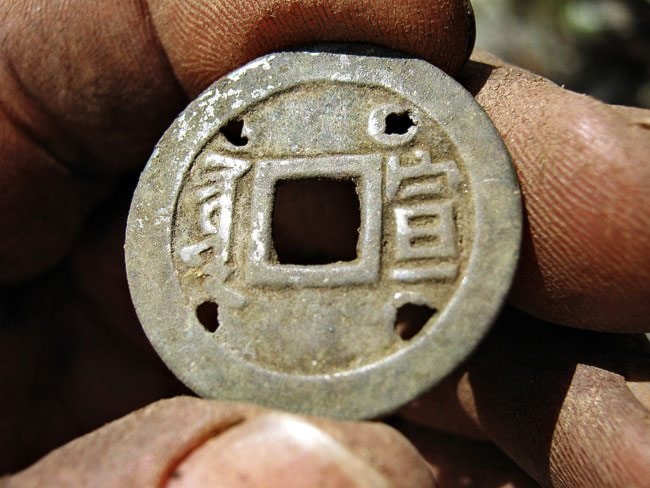We like to think the global economy is simply a product of our technology and the fast-paced modern world.
But a discovery in the Yukon bush this summer reminds us the world has been trading in a similar fashion far longer than we care to remember.
In the woods about 250 kilometres northwest of Whitehorse, along a trading route used by the coastal Chilkats between Dyea, Alaska, and Selkirk, James Mooney and Kirby Booker were digging in the dirt.
The effort was part of a heritage site scouting mission mounted by Western Copper and Gold in the vicinity of its Casino Mine.
There, on the long-abandoned trading route, Booker turned over a clod of soil and Mooney spotted something metallic.
It turned out to be a Chinese coin roughly 340 years old.
The artifact had probably been carried into the region long before the Klondike stampeders of ‘98.
The find was made at a perfect campsite - at the confluence of a river and creek. It, too, had probably been used for centuries, which is what drew the archeologists there.
The coin is believed to be a vestige of the trade between the Chilkat, the Northern Tutchone and Russian fur traders who worked the Alaskan coast as early as 1740.
In this case, the Russians are believed to be the link between the Northern Tutchone of the Yukon interior and the Chinese.
The Russians would trade with China, and bring the spoils north to make deals with the coastal Chilkats, who fiercely guarded the mountain passes to the interior. They’d trade furs and other commodities for tobacco, cloth, glass and metal, like coins. The Chilkats would then trade with the Northern Tutchone.
So you had a sweeping trade, all the way from Asia, through Russia to North America and the interior of the Yukon, and, presumably back again.
There’s so much wrapped up in that little coin, unearthed at a peaceful Yukon campsite.
Even in the digital information age you have to marvel at the ancient mint’s meticulous records. Through the efforts of that conscientious bureaucracy, we know the Yukon coin was forged in the time of Kangxi, fourth emperor of the Qing dynasty, between 1667 and 1671.
The coin also reveals little has changed in the global economy over the last 260 years, beyond the speed and volume of the trade.
And, of course, the goods being traded.
Today, we’re preparing to mine copper and ship it to China.
And, in preparing for that massive operation, we unearth a tiny piece of history from a wealthy empire of the past.
A little forged piece of copper, traded to the Yukon from China.
A reminder to us all that the more things change, the more they remain the same.
